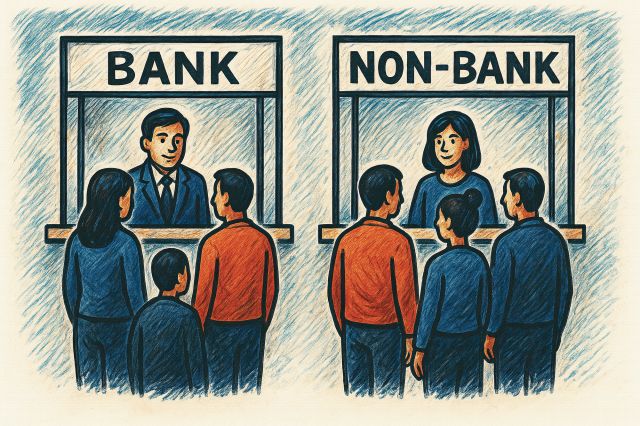
Peter Cannava
Managing director at Wells Fargo

What’s been the biggest highlight and biggest challenge of 2025 for your team thus far?
The biggest highlight has been the increase in new origination volumes across our CRE business. The market has been very accommodating — 10-year Treasury closer to 4 percent, spread tightening through most of the year, and borrowers wanting or needing to transact after years of being on the sidelines. There remain a lot of deals to close between now and year-end, but we are optimistic about our origination volume in 2025 being significantly above historical averages. We also see strong momentum heading into 2026 so long as the market remains accommodating — rates remaining at and around current levels, the economy remaining relatively stable, and geopolitical risks not causing a market dislocation.
The biggest challenge from a balance sheet perspective has been loan payoffs, but, thankfully, we’ve captured much of that volume vis-à-vis our CMBS and agency business. From an agency perspective, deal timelines have taken
longer and there has been increased focus on fraud, which has created more work during both the quote and underwriting phase.
Which lending opportunities that didn’t exist last year are you jumping on today?
I’m not sure if there are specific lending opportunities that didn’t exist; rather we are getting certain types of deals done today that maybe weren’t achievable last year. For example, we executed our first facility with the GSEs on a student housing portfolio. We are beginning to see liquidity come back in the senior housing space and even in the office sector. I’m proud of our team executing on behalf of new clients, which is clearly an opportunity we want to seize and a testament to our ability to deliver.
What’s key to affordable housing creation and preservation in the U.S. today?
The affordable housing crisis in our country is multifaceted and isn’t fixed by just one or two key things. However, some themes or headwinds that are impacting our ability to create new affordable housing include the cost of land, the cost to build, excessive zoning and land-use restrictions, lack of federal and local resources, and NIMBYism.
Preservation of affordable housing also has its challenges because much of the stock is older and requires significant renovations. Lastly, the affordable housing community needs more tools. The One Big Beautiful Bill was a start, helping improve tools like the Low-Income Housing Tax Credit by reducing the 50 percent test to 25 percent, and the New Markets Tax Credit being approved in perpetuity. However, that in and of itself will not be enough. In my view, we need more tools including increasing private activity volume cap for affordable housing and lowering the capital requirements on banks that lend and invest in these projects.
How does the 485x program compare to 421a, so far?
Both were designed to promote affordable housing, but 485x has not been as successful as 421a or as successful as the state and city might’ve hoped. Depending on whom you speak with, the lack of success is due to several factors, including burdensome wage requirements and larger projects not receiving the same benefits as smaller projects.
The limited amount of development under 485x clearly illustrates the program isn’t working as intended or as well as 421a to develop affordable units. In my estimation there needs to be more incentives to spur more development and possibly additional tools offered such as private activity bond cap to finance the affordable units, which could be more feasible given the reduction in the 50 percent test for LIHTC in the One Big Beautiful Bill. In New York City, mixed-income projects are key to the creation of more affordable housing and subsidizing affordable development with market-rate rent and incentives.
What do you wish you knew coming into 2025 that you know now?
I can’t point to one thing, but 2025 has been a roller coaster. I don’t think I would have done much differently anyway.
Lighting Round:
“The Summer I Turned Pretty” or “The Morning Show”?
Neither, as I don’t really watch TV.
Where will rates be one year from now?
10-year will be between 3.85 percent and 4.5 percent; SOFR could be lower by 50 to 100 basis points.
Most significant moment of 2025: Taylor Swift’s engagement or Fed rate cuts?
Definitely Taylor Swift’s engagement.
Friend, unfriend, block: Office, retail, hospitality?
Friend to all three (easy answer).
How do you shake off market stress?
Golf and time with family/friends.
NFL or college football?
NFL all day.
What song would be the theme tune of your life?
“My Way,” Frank Sinatra.
Ultimate dinner party: Pick three guests?
Abraham Lincoln, Martin Luther King, Winston Churchill.
Thanksgiving: Chef or spectator/taster?
Chef.
What’s your holiday wish?
Peace on Earth.







